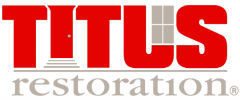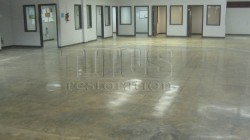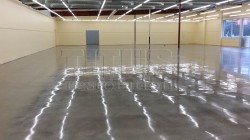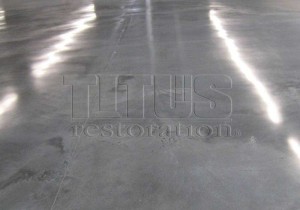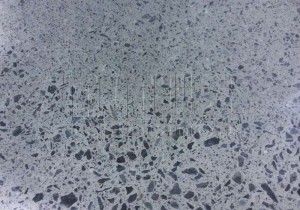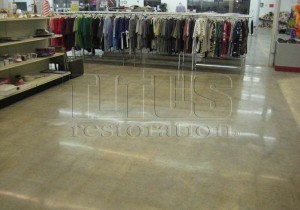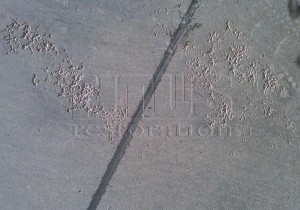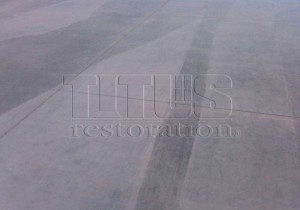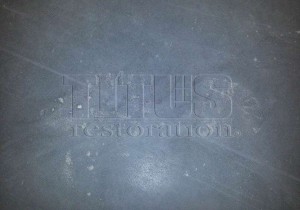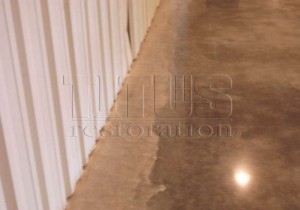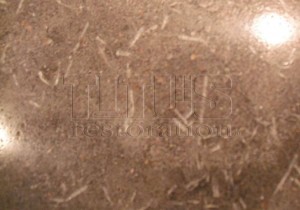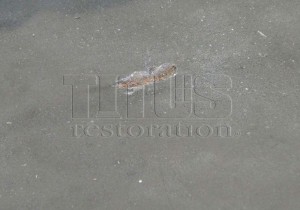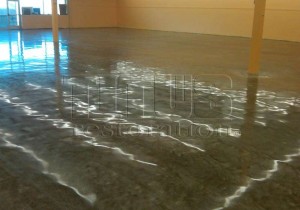If you have ever performed a Google search on “Polished Concrete” you have, without doubt, seen an array of beautiful photos. Decorating magazines, trade shows, and contractors’ websites they all show concrete polished to perfection. Is this what you expect for your concrete polished concrete project? It is certainly possible, however, you must know how to get there and be willing to do your homework.
The Reality of Polished Concrete
Our website is full of photos regarding the problems you can face and how to avoid them if at all possible.
- VCT Ghosting
- Wavy Surface
It can be difficult to predict what you will find on the polished surface after the first cut because this is not always possible to have absolute control over what happens to the floor prior to polishing. Some would call these the disadvantages of polished concrete.
With renovations and even new construction, the reality of polished concrete is that there are many possibilities for what to expect when polishing concrete. Some of these expectations include:
Discoloration of Polished Concrete
This can be seen when the top of the concrete paste may be darker than just millimeters below. The different colors are exposed once the floor is ground smooth. See more about paste discoloration in polished concrete floors.
Varying Aggregate Exposure
If a concrete floor has not been poured to a Floor Flatness Level of 40 or higher, concrete grinding will remove the mounds but not quite reach the dips (we call this a wavy or uneven floor) when this happens, the aggregate exposure is varied due to the uneven cutting depths. Click on the following link to read more about varying aggregate exposure.
Ghosting
If you are removing a previous floor covering such as quarry tile or VCT, ghosting will most likely occur leaving behind the grid pattern from the previous tile covering. Read more about ghosting in polished concrete.
Micro Pitting
Sand loss can occur in very soft concrete or as a result of deep grinding leaving behind tiny pinholes where small sand particles have worked their way out of the concrete or larger holes from bigger aggregate popping out. Left alone, these can lessen the reflection of your finished concrete floor. Titus can fill these holes with a grout coat to smooth the surface and increase reflectivity.
Uneven Hydration
As concrete cures, water escapes the slab at the surface. If items are placed on the concrete surface during this process, hydration marks can be left behind under those items. Eventually the concrete will dry but this could take quite a long time, even a year or longer.
Footprints
If the concrete finisher gets on the slab too quickly following placement and the concrete is not sufficiently hardened, indentions from footprints or other items may be left in the slab. This pressure can push the cream lower in the surface and even if it does not leave an indention, it may leave a print looking like a shoe resulting from the difference in the cream at the surface of the slab.
Poor edge Finishing
During concrete placement, edges must receive the same attention as the rest of the floor. Hand troweled edges should be well compacted and burned in to prevent a significant different between the floor area and the edge area. There is nothing that can be done by the Polishing Contractor to make this better.
Excess Fiber
Fiber can be used to strengthen concrete. It is important to follow the formula correctly – 1.5 to 2 lbs of fiber per yard of cement (cement, not concrete!) Excess fiber installed in concrete will create a slab resembling a Chia Pet!
Foreign Material
We have seen many different items embedded in concrete (leaves, pine straw, cigarettes). These items may not be visible prior to the grinding process. Once the floor is ground and the slab is opened up, this debris can appear and must be removed and patched prior to completion of the floor.
Wavy Floor
The most common issue we see with floors that are to be polished is a wavy slab. Flatness requirements that are not followed will leave a less than desirable final finish. Always remember – we can only polishe what you give us. The concrete slab must be installed properly to achieve a great Polished Concrete floor!
For more images of the reality of polished concrete floors, visit our gallery here.
Other Relevant Topics:
- What is Polished Concrete
- Benefits of Polished Concrete
- How to Polish Concrete
- Polished Concrete Maintenance
- Tips for the GC
- Polished Concrete Cost
